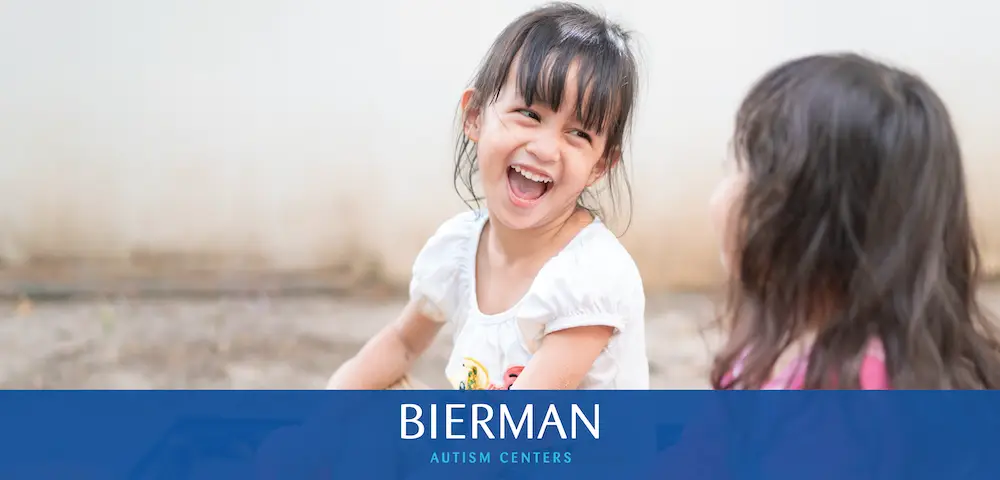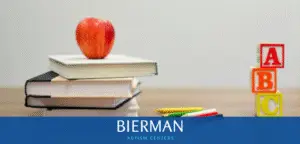Social skills training includes various teaching interventions to support the development of social skills, such as social interaction and social play. Although Applied Behavior Analysis (ABA) therapists, Board Certified Behavior Analysts (BCBAs), and teachers can use social skill interventions with any population, they often use these interventions with those diagnosed with autism spectrum disorder (ASD). Because children with autism commonly experience difficulties with social communication, social skills training and social skills-based interventions can be beneficial for improving these skills and increasing comfort in social situations. These interventions can also help children learn how to advocate for accommodations in social settings and appropriately advocate to terminate or exit social settings or situations that they don’t like or feel uncomfortable in.
Social skills training is an evidence-based practice for toddlers through young adults (Hume et al., 2021). Its benefits extend beyond traditional social skills. Children and adolescents who receive quality social skills training may experience positive outcomes in a wide range of skills within the following areas.
- Communication
- Social
- Play
- Cognitive
- School readiness
- Interfering behavior reduction
- Mental health
- Self-determination
What are Ways to Work on Positive Social Interactions for Children with Autism?
There are many strategies that can be effective in teaching positive social interactions to children with autism. Behavior analysts, psychologists, special educators, and other professionals may employ several different techniques to support the individualized needs of their learners, including the following.
- Role-play—Acting out social situations with a trusted adult can help children with autism develop social competencies, such as use of social communication, and increase comfort and confidence in engaging with others.
- Video modeling—Observing others engage in social behavior through a video demonstration can be helpful for many children in learning how to imitate important social communication skills.
- Social narratives—Social narratives, commonly called social stories, are written or video-based narratives of a social situation. These narratives provide examples of expected behaviors for specific situations that the child and/or therapy team have identified as important. For example, a child may be entering a new skill and a social story is created to review who their new teacher is, what the classroom looks like, and what the classroom rules are. Social narratives are often combined with other strategies, such as role-playing to learn or practice expected behaviors before entering a new social situation.
- Peer-Mediated Interventions—These interventions involve using neurotypical peers as mentors, helping children with autism actively participate in play activities and social interactions. This method can increase social motivation and enhance social communication (Zhang et al., 2022). It is important to note that peer-mediated interventions only work when children have the necessary observational learning and imitation skills to attend to and learn from their peer models. Peer-mediated interventions and peer mentors work well in the school setting.
- Social skills groups—Teaching social skills in a group setting offers structure and an ability to interact directly with peers, practicing real-life skills as they learn them.
What Social Skills Are Best to Work on at an Early Age?
Teaching foundational social skills from an early age promotes the best outcomes. By teaching the following skills during early childhood, you can lay the groundwork for successful social interactions across one’s lifetime.
- Requesting basic wants and needs—early communication skills serve as the building blocks for successful social communication later on. The ability to request and label things that a child likes, wants, or needs will assist them in learning more complex language as they continue to interact with the world around them.
- Greetings and simple conversations—Communication skills become increasingly complex as children age. Setting the foundation for more complex skills by teaching basic greetings and other single exchanges can be beneficial.
- Turn-taking—Teaching children how to take turns during play and conversation helps them understand the give-and-take of social interactions.
- Recognizing emotions—Teaching a basic understanding of emotions can support a range of skills, including emotional regulation and demonstrating empathy.
- Basic problem-solving—Helping a child learn how to solve conflicts independently can set the stage for more complex challenges later in life.
- Understanding nonverbal cues—Many children with autism don’t recognize nonverbal cues, such as facial expressions, body language, and gestures. Nonverbal communication is a significant aspect of how we communicate with others. An inability to understand these cues may result in missing valuable information.
- Self-advocacy—Children with disabilities face a significantly higher risk of experiencing abuse or neglect, with studies indicating they are at least three times more vulnerable (Child Welfare Information Gateway, 2018). Self-advocacy skills are critical for preventing mistreatment and helping children learn what to do in uncomfortable or dangerous situations.
What Social Skills Are Best to Stay Away From?
Every child’s social skills program should be individualized to their unique needs. Social skills development shouldn’t be a one-size-fits-all approach. Additionally, not every social norm needs to be taught. There are some skills clinicians should avoid targeting in social skills interventions, such as sustained eye contact and the suppression of self-stimulatory.
Sustained eye contact
Neurotypical people can generally perceive complex information by observing other people’s facial expressions. However, neurodivergent children commonly struggle with this (Hirsch et al., 2022). Historically, making and maintaining eye contact has been a skill that clinicians have targeted in ABA and social skills training programs. It was once believed that this was a socially significant skill to teach. However, many autistic individuals have shared concerns with this practice. In one qualitative analysis, researchers identified several adverse reactions to eye contact in autistic individuals. Feelings of sensory overload, anxiety, and even pain were reported (Trevisan et al., 2017). Recognizing that autistic children may physically perceive eye contact differently leads to an understanding that this may not be a socially significant skill. Making eye contact with peers or adults is not a skill that is necessary to be successful in social interactions, and it is generally a skill that does not need to be targeted in social skills training. Instead, instruction can focus on teaching children to orient to or pay attention to sounds in their environment that signal that their attention is needed (e.g., someone calling their name or a loud noise that may be dangerous).
Self-stimulatory behavior reduction
Everyone engages in self-stimulatory behaviors, also known as stimming. Some people twirl their hair, bite their fingers, click a pen, or shake their legs. Stimming, however, is recognized as a common feature in those with autism. Many children with autism engage in stimming at a higher rate than their neurotypical peers. They may rock their body, flap their arms, whistle, or engage in other body movements or vocalizations. In the past, social skills training often focused on teaching children how to “fit in.” As such, there was a focus on reducing stimming behaviors. However, we now know that stimming serves a valuable purpose for children with autism. For many, stimming helps them to self-regulate and process sensory information (Kapp et al., 2019). Attempting to suppress these behaviors to help them better fit in with peers is often unnecessary and potentially harmful. There are exceptions to this. For example, if a child engages in dangerous stimming (i.e., head banging) or if a learner expresses a desire to reduce or replace their own stimming behaviors, it then may be appropriate to implement interventions. Just remember that social skills training and social interventions are there to help a child learn how to interact with the world around them, properly advocate for their wants and needs, and remain safe when interacting with others.
Conclusion: Does Social Skills Training Help Children with Autism
Social skills training can help children with autism develop lifelong skills that promote improved communication, self-advocacy, problem-solving, and fostering and maintaining friendships. With evidence-based practices and individualized interventions, children with autism can develop meaningful skills that enhance their quality of life.
References
Child Welfare Information Gateway. (2018). The risk and prevention of maltreatment of children with disabilities. Washington, DC: U.S. Department of Health and Human Services, Children’s Bureau.
Hirsch, J., Zhang, X., Noah, J. A., Dravida, S., Naples, A., Tiede, M., Wolf, J. M., & McPartland, J. C. (2022). Neural correlates of eye contact and social function in autism spectrum disorder. PloS one, 17(11), e0265798. https://doi.org/10.1371/journal.pone.0265798
Hume K, Steinbrenner JR, Odom SL, Morin KL, Nowell SW, Tomaszewski B, Szendrey S, McIntyre NS, Yücesoy-Özkan S, Savage MN. (2021). Evidence-based practices for children, youth, and young adults with autism: Third generation review. J Autism Dev Disord. 51, 4013–4032. doi: 10.1007/s10803-020-04844-2. Epub 2021 Jan 15. Erratum in: J Autism Dev Disord. 2023 Jan;53(1):514. PMID: 33449225; PMCID: PMC8510990.
Kapp, S. K., Steward, R., Crane, L., Elliott, D., Elphick, C., Pellicano, E., & Russell, G. (2019). ‘People should be allowed to do what they like’: Autistic adults’ views and experiences of stimming. Autism : The international Journal of Research and Practice, 23(7), 1782–1792. https://doi.org/10.1177/1362361319829628
Trevisan, D. A., Roberts, N., Lin, C., & Birmingham, E. (2017). How do adults and teens with self-declared autism spectrum disorder experience eye contact? A qualitative analysis of first-hand accounts. PloS one, 12(11), e0188446. https://doi.org/10.1371/journal.pone.0188446
Zhang, B., Liang, S., Chen, J., Chen, L., Chen, W., Tu, S., Hu, L., Jin, H., & Chu, L. (2022). Effectiveness of peer-mediated intervention on social skills for children with autism spectrum disorder: a randomized controlled trial. Translational Pediatrics, 11(5), 663–675. https://doi.org/10.21037/tp-22-110


